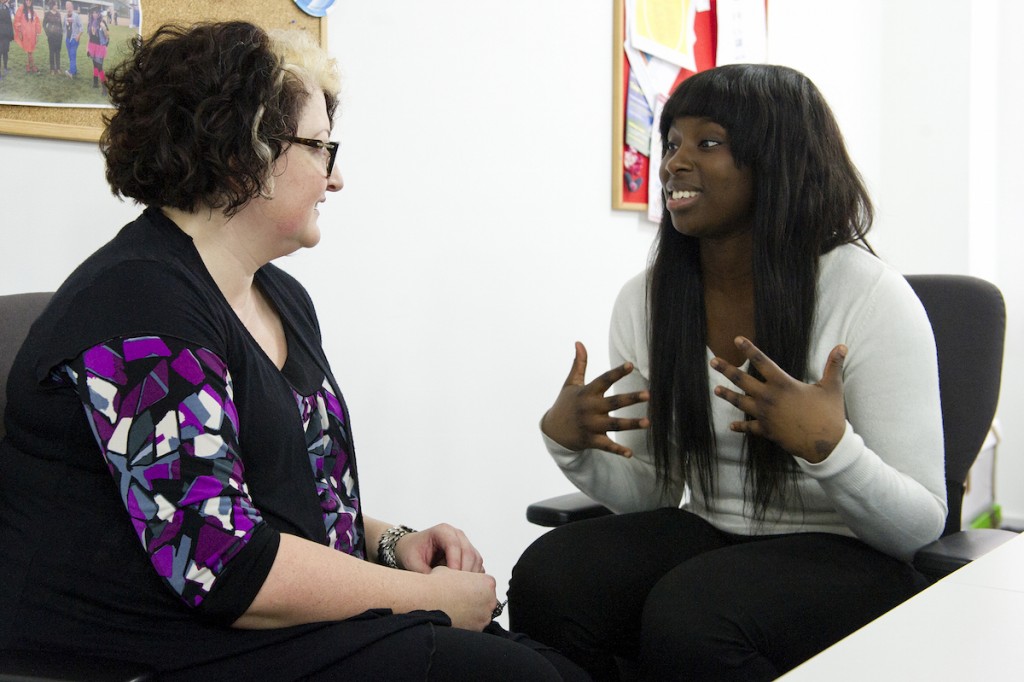
It’s widely accepted that men die more often by suicide than women, especially in high-income countries, and this is reflected in suicide prevention priorities. However, women attempt suicide more than men, often in the context of multiple health conditions and social difficulties, alongside substance use disorders and domestic abuse (DA). Despite landmark findings that DA contributed to over a third of women’s suicides (Walby, 2004), their relationship has been insufficiently studied.
Domestic abuse is defined in this study as “physical, sexual, emotional, psychological and/or financial abuse, perpetrated by someone with whom the victim is or has been in a familial, domestic, intimate or otherwise close inter-personal relationship” (UK Government, 2018). That is, DA includes violence perpetrated by the person’s parent, child, cohabiting friend or other relative, as well as intimate partners and ex-partners. This study uses the terms ‘victim’ and ‘client’ throughout, although preferences for terms such as ‘survivor’ and ‘service user’ may vary.
Despite established psychiatric sequelae of DA, including depression and post-traumatic stress disorder, mental health professionals often fail to ask about it during suicide risk assessments (Rose et al., 2010; Trevillion et al., 2014; Oram et al., 2017; Tomlin, 2013). Charitable organisations like Refuge provide a large proportion of services for people experiencing DA, collecting important data about their clients’ mental health and wellbeing. This study investigated the prevalence of suicidality and associated factors in a large sample of people accessing Refuge services.

Mental health professionals often fail to ask about domestic abuse during suicide risk assessments.
Methods
Quantitative
The authors accessed data from Refuge’s national casework database (‘IMPACT’), between April 2015 and March 2017. Out of over 8,000, they accessed case files from a sub-sample of 3,519 individuals accessing Refuge services during that period, aged over 18 years, who completed ‘CORE-10’ (psychological distress screen). Of this sub-sample, missing data meant that 1,379 case files were analysed in terms of risk assessment using ‘CAADA-DASH’ (CAADA, 2012).
The larger sample comprised 97.5% women, 2.4% men, 2 (unspecified) transgender and 1 inter-sex client. Mean ages were 34.7 years (women) and 42.4 years (men). The sample comprised 48.5% white British, 19.3% black British, black African, black Caribbean or dual-heritage black individuals, 12.6% South Asian, 7.5% Eastern European and 5.1% unspecified Caucasian clients. 95.6% were heterosexual females. DA was perpetrated by 84.1% male partners or ex-partners and 8.3% ‘relatives’. Refuge services were 66.5% community outreach and independent domestic violence advocacy (IDVA), 26% residential accommodation and 7.5% independent sexual violence advocacy.
Qualitative
The authors conducted 20 interviews with Refuge expert practitioners providing community telephone and in-person support, working in refuges, coordinating multi-agency risk-assessment conferences (MARACs) for high-risk clients and training professionals. Audio-recorded interviews lasting 45-80 minutes were transcribed and coded thematically on a ‘grounded basis’ using Nvivo.
Results
Quantitative
Analyses found that 24.2% of clients responded positively to any measure of suicidality. 18.9% felt suicidal now or recently, 18.3% had felt suicidal before or made plans to end their life and 3.1% had made a suicide attempt. Cross-national lifetime prevalence estimates are 9.2% (suicidal ideation), 3.1% (suicidal plans) and 2.7% (suicide attempts; Nock et al., 2008).
Suicidality correlated significantly with:
- So-called ‘honour’ based violence (r=0.054, p<0.01: 145 case files)
- Being strangled (r=0.079, p<0.01), kicked (r=0.079, p<0.01) or suffocated (r=0.074, p<0.01)
- ‘Any report of sexual abuse’ (r=0.163, p<0.01)
- Enforced prostitution (r= 0.098, p<0.01)
- Isolation from family and friends (r=0.107, p<0.01)
- Threats of harm with a weapon (r=0.109, p<0.01)
- Threats to kill a family member (r=0.092, p<0.01)
- ‘Any financial abuse’ (r=0.092, p<0.01).
Frequency of abuse suggested a dose-response effect, especially for cumulative:
- Sexual abuse (r=0.179, p<0.01)
- Threats and psychological abuse (r=0.111, p<0.01)
- Serious assault (r=0.111, p<0.01).
Although 96% of suicidal individuals felt despairing or hopeless, so did 79% of non-suicidal individuals. Binary logistic regression analyses found that the odds of being suicidal were greater for individuals who:
- Felt depressed (odds ratio (OR)=3.5)
- Did not have children (OR=1.87)
- Felt despairing or hopeless (OR=1.69)
- Had alcohol (OR=1.68) or drug (OR=1.59) problems.
The odds of being suicidal increased by a factor of 1.25 for every additional type of sexual abuse the person experienced.

Suicidality was correlated with experiences of isolation and hopelessness.
Qualitative
Practitioner themes were grouped into: (1) suicidality in Refuge clients and perceived associations, (2) providing support and (3) attending to staff wellbeing.
- Practitioners recognised the prevalence of suicidality and its exacerbation by drug and alcohol problems, inadequate social support, precarious housing or immigration status and the stress of criminal justice proceedings.
Whilst practitioners concurred with quantitative data that having children (and religious faith) can be protective, they highlighted both as risk factors for non-disclosure of suicidality. Several IDVAs highlighted high caseloads as barriers to detection of suicidality.
- Practitioners discussed limitations of CAADA-DASH risk assessments, prioritising risks of abuse by perpetrators over risks of self-harm, substance misuse and other risky behaviour. They cautioned against ‘tick-box’ risk assessments stratifying clients for MARAC provision, neglecting dynamic risks and gate-keeping services if not scoring ‘high enough’. Practitioners identified unsatisfactory experiences of acute psychiatric assessment in emergency departments and crisis teams, long waiting lists for counselling and psychological therapies (despite evidence of their effectiveness: see Yapp et al. 2018), inadequate mental health representation at MARACs and poor service integration as barriers to recovery. This is relevant to evidence of help-seeking in the year before death by suicide (NHS Digital, 2016).
- DA practitioners raised their own vicarious trauma and burnout, in line with previous literature (Baird & Jenkins, 2003). This was enhanced by their sense of responsibility for coordinating and ‘filling gaps’ between disparate, straitened services. They highlighted the difficulty of ensuring boundaried professional practice when working with vulnerable clients, emphasising the need for training and clinical supervision.

Practitioner interviews concurred with high suicidality among people experiencing domestic abuse and highlighted inadequate mental healthcare for Refuge clients.
Conclusions
- The authors argue that the distress, sense of entrapment and hopelessness arising from domestic abuse (DA) can sometimes cause victims to feel that suicide is “the only way out” (O’Connor & Knock, 2014).
- Multidisciplinary staff must enable disclosure of suicidality by victims of DA and provide flexible and tailored support, including longer-term, requiring well-resourced services and well-supported staff.
Strengths and limitations
Key strengths are this study’s analysis of real-world data from Refuge’s front-line services across England and Wales, its large sample size and triangulation of mixed methods. Data from clients accessing residential and community services are likely to represent a diverse cohort.
The authors acknowledge the likelihood of their underestimating suicidality, due to a range of barriers to disclosure. The study could have been enhanced by including qualitative interviews with a sub-group of Refuge clients on their perspectives on suicidality and barriers to disclosure. The authors highlight that interviews with psychiatric, housing and criminal justice practitioners would have enhanced their findings about gaps in these services.
The article would be enhanced by providing details about the recruitment and representativeness of included practitioners, the interview structure, style and analytic process used, as well as ethical approval. Multiple statistical analyses were performed but correction for multiple comparisons is not mentioned.

Multi-agency cooperation is required to better meet the diverse needs of people experiencing domestic abuse.
Implications for practice
Despite awareness that adverse life events are risk factors for mental ill-health and suicidality, clinicians often fail to ask specifically about domestic abuse (DA). This new study provides further evidence of elevated suicidality among people accessing Refuge services, further supporting the need to discuss relationship stressors as part of routine psychiatric risk assessment, in line with international guidelines (WHO, 2013).
Some of the associations with suicidality reported by this study are of limited informativeness to clinical practice, since rates of low mood, isolation and hopelessness are high in both suicidal and ‘non-suicidal’ groups. However, this in itself indicates the importance of always considering mental health whenever assessing or treating patients who may be experiencing DA.
The association of suicidality with specific types of abuse such as so-called ‘honour’-based violence, severe physical and cumulative sexual violence, reminds clinicians of the need to assess a person’s mental state when treating physical health consequences of DA, including when the cause of illness and injury is not disclosed.
Munro and Aitken’s qualitative results provide valuable insight for clinicians into the considerable responsibility taken for coordinating the support provided to victims of DA by case-workers and IDVAs, often at the expense of their own wellbeing. They support the need for greater multi-agency collaboration, in which clinicians can be instrumental, where the person concerned provides their consent.

Clinicians can support the health and wellbeing of people experiencing domestic abuse by collaborative working with case-workers.
Conflicts of interest
None to declare.
Links
Primary paper
Munro VE, Aitken R (2019). From hoping to help: Identifying and responding to suicidality amongst victims of domestic abuse. International Review of Victimology. Available from: https://doi.org/10.1177/0269758018824160 Accessed 10 March 2019.
Other references
Baird S, Jenkins S (2003). Vicarious traumatization, secondary traumatic stress, and burnout in sexual assault and domestic violence agency staff. Violence and Victims 18: 71–86.
CAADA (2012). CAADA-DASH Risk Identification Checklist (RIC) for MARAC Agencies. Available from: https://www.cscb-new.co.uk/wp-content/uploads/2015/11/CAADA-DASH-risk-assessment-for-MARAC-agencies.pdf Accessed 10 March 2019.
NHS Digital (2016) Mental Health and Wellbeing in England: Adult Psychiatric Morbidity Survey 2014. Available from: https://digital.nhs.uk/catalogue/PUB21748 Accessed 10 March 2019.
Nock M, et al. (2008). Cross-national prevalence and risk factors for suicidal ideation, plans and attempts. British Journal of Psychiatry 192: 98–105.
O’Connor R, Knock M (2014). The psychology of suicidal behaviour. Lancet Psychiatry 1 73–85.
Oram S, et al. (2017). Violence against women and mental health. Lancet Psychiatry 4: 159–170.
Rose D et al. (2010). Barriers and facilitators of disclosures of domestic violence by mental health service users: A qualitative study. British Journal of Psychiatry 198: 189–194.
Tomlin A. (2013). Many psychiatric patients experience domestic violence, but more research is needed. Available from: https://www.nationalelfservice.net/publication-types/systematic-review/many-psychiatric-patients-experience-domestic-violence-but-more-research-is-needed/ Accessed 10 March 2019.
Trevillion K, et al. (2014). Disclosure of domestic violence in mental health settings: A qualitative meta-synthesis. International Review of Psychiatry 26: 430–444.
UK Government (2018). Domestic abuse: how to get help. Available from: https://www.gov.uk/guidance/domestic-abuse-how-to-get-help#domestic-violence-and-abuse-new-definition Accessed 09 March 2019.
Walby S (2004). The Cost of Domestic Violence. London: Women and Equality Unit.
World Health Organization (2013). Responding to intimate partner violence and sexual violence against women WHO clinical and policy guidelines (PDF).
Yapp E (2018). A psychological victory for the domestic violence and abuse sector: the PATH trial. Available from: https://www.nationalelfservice.net/treatment/psychotherapy/a-psychological-victory-for-the-domestic-violence-and-abuse-sector/ Accessed 10 March 2019.
Photo credits
- Photo by Josh Edgoose on Unsplash
- Photo by Kamil S on Unsplash

Great research and report, story. While more and more attention has been given to domestic abuse on mental health and suicidality, there is not enough given to workplace abuse on suicidility. Recently, a major organisation on suicide prevention denied there was connection of workplace abuse to suicidality. It’s time we look into it.
Domestic Abuse is a Crime. I have a Crime Report made a VPS assigned a Police Office 6 months later Officer finally made contact to tell me she is not contactable and no longer on ‘Domestic Unit’. The System exists. Problem; getting into it.
How many more suicides. How many more deaths.